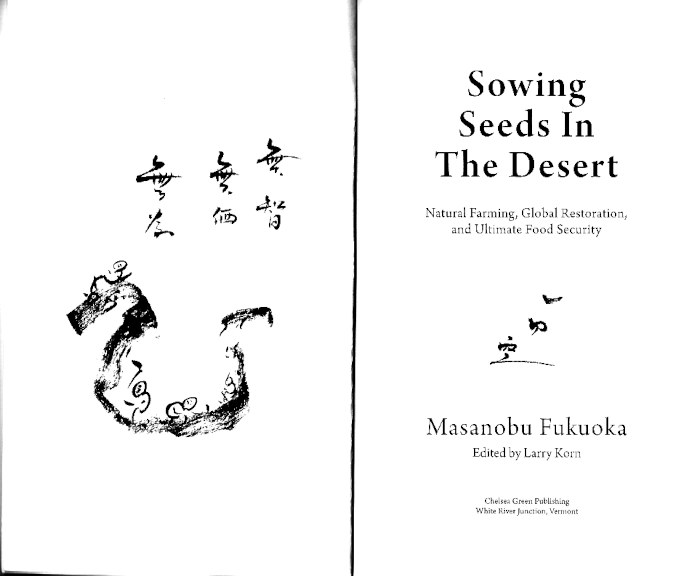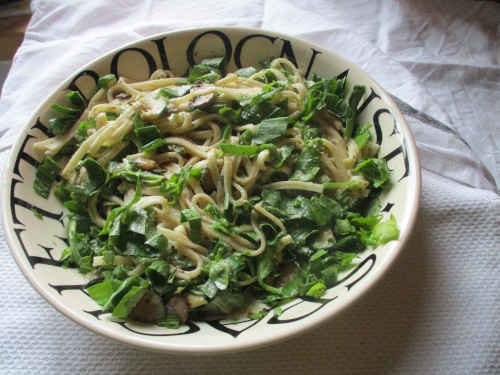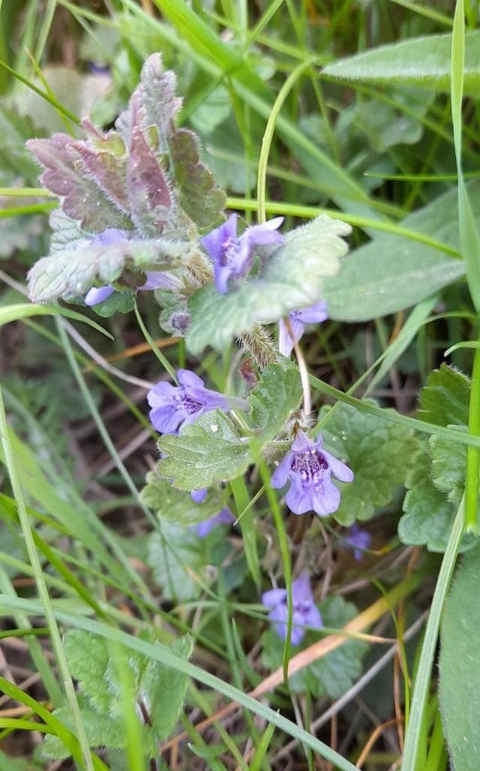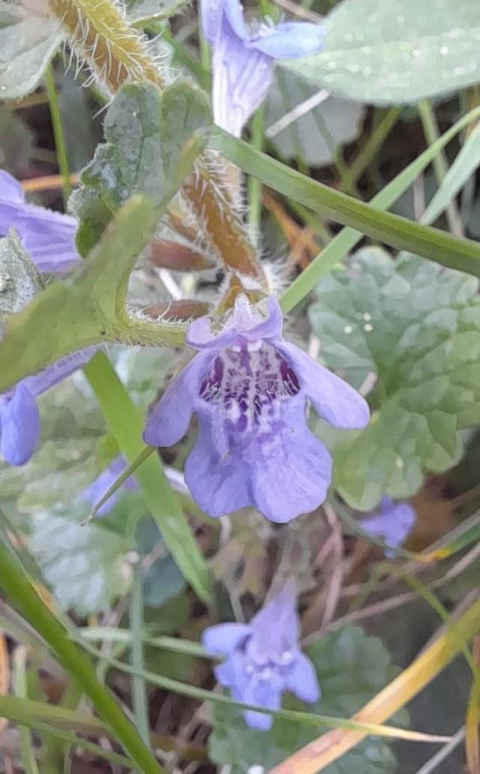Be ‘In-Tune’ with Nature
Two pathways to consider
Krysia Soutar
Springtime: a time for seeding not only our plants but also seeding new thoughts in our mind. Our thinking is a reflection of who and what we are. This is in turn depends on the quality of our blood; our food is the source of our blood. There is a strong connection between the quality of our intestinal microbiome and our brain.
Spring is a good time to consider what kind of thoughts you are seeding and where they may lead you. There are many pathways you can take. You can choose to be on a spiritual pathway, showing reverence for Nature in your daily way of life, that will help create a peaceful world in harmony with nature. Or you can follow a more materialistic way, which consumes our natural resources and leads to deterioration of our health and that of the planet.
It all depends on how you perceive the world around you.
If you choose the first way, you are on the way to helping regenerate the earth, you are assisting nature to do her own thing, you are looking towards natural ways of living, eating and growing. You are not taking too much, you are learning to live within the natural world.
On this journey towards a peaceful world we are all standing upon the shoulders of those who have gone before us. Their work has been hugely significant in highlighting the errors of our human ways, and they have left us with with a legacy to follow, for which we are forever grateful.
I would like to mention two people who have left us with a way forward:
Masanobu Fukuoka (1913 - 2008)
Philosopher, Artist, Natural Farmer, Author
I was first introduced to his work during my permaculture design course. His first book ‘The One Straw Revolution” was on display along with Bill Mollison’s "Permaculture - A Designers Manual". I was intrigued by his philosophy and his methods for natural farming.
He was a teacher of Natural Farming, he was also a philosopher and artist (his paintings still make me laugh). In his later years, he was invited to help regenerate some desert regions of the world with his method of placing a selection of seeds, fungi, micro-organisms and other things into clay pellets.
He thought that humanity was going in the wrong direction and he spent his life working to demonstrate how natural farming can provide us with everything we need without causing ecological disasters.
 |
| The Cave if the Intellect - Masanobu Fukuoka |
| This shows two men trapped by their own intellects. The deeper the pit gets, the more difficult it is for them to escape. The person sitting outside is enjoying life through Natural Farming, |
 |
Many years have passed since then, and I have recently been reading ’Sowing Seeds in the Desert’ (his last book). It seems to be ‘in tune’ with my current thinking, and I am so glad to share something of this with you now. It seems his work and that of Permaculture are one and the same, but each coming at it from different ways. Does it matter? Not really, we are all about putting back the ‘true nature’ that has been lost, working to the best of our abilities. Along the way, we are creating a way of life that is healthy and happy for all.
Fukuoka believed that we could create a society which lived close to nature and which would heal not only the destruction of our natural world but also heal the human heart and spirit. He referred to it as ‘natural culture and community’. We adopt an approach of “non-doing” (which is thoughtful), as distinct from “doing nothing” (which is thoughtless).
His deep reflections and observations led him to the conclusion that ‘human intellect’ was the cause of the ecological crisis he saw around the world. We should apply less intellect and more wisdom. ‘’By now, almost everything humanity is doing is mitigating problems caused by previous misguided actions”
Books by Mr. Fukuoka:
- The One Straw Revolution’ edited by Larry Korn
- The Natural Way of Farming’ edited by Larry Korn
- Sowing Seeds The Desert’- edited by Larry Korn
Larry Korn ( 1948 - 2019)
Natural Farmer and Permaculture Practitioner
Larry was an American who lived and worked with Mr. Fukuoka on his farm for more than two years in the 1970’s. He was responsible for editing and translating his first English Language book. He accompanied him on his visits to the United States.
Larry spent the rest of his life in the USA teaching natural farming, permaculture and building resilient sustainable communities. I would like to express my sincere thanks for this man's dedication in bringing this important knowledge into the English speaking world.
Larry introduced Bill Mollison to Masanobu Fukuoka at a Permaculture Convergence in Olympia, Washington in the late 1980’s. To quote Larry “Fukuoka was overwhelmed and heartened by the number and sincerity of the like-thinking people he met. He thanked Mollison for ‘creating this network of bright, energetic people working to help save the planet".
‘Now,’ he said, ‘ for the first time in my life I have hope for the future’.
I am including videos of Larry Korn talking to Masanobu Fukuoka (in three parts), if you want to explore all this further:
Recipe for springtime
Noodles Prima Vera with wild garlic
After the heaviness of winter we need to lighten up. We go for lighter cooking. Spring greens and wild ramsons added to dishes are ideal to help the body detoxify. Wild garlic, also known as Ramsons, grow in the shady front part of our garden, we eat them all the time during this season. They are free, often found in the woods, and are full of vitamins, with blood cleansing properties. To avoid tugging up the roots, use scissors to cut a small amount of the leaves and flowers, they will then grow again.
Ingredients:
- Bunch of wild garlic leaves- about 15 leaves
- 1 packet Clearspring organic udon noodles
- a small amount of mushrooms diced
- 1 courgette diced
- 1-2 tablespoons of light tahini dissolved in water to make sauce
- juice of approx 1/2 lemon
- Shony mara seaweed to taste 1/2 to 1 teaspoon
- chopped parsley or whatever you have
- small amount organic cold pressed olive oil
Method:
- Wash chop and thinly dice courgette and mushrooms
- Add small amount oil to pan, sauce vegetables with sprinkle sea salt, add little water if sticking, cook until soft
- Prepare sauce, dissolve 1-2 heaped tablespoons of light tahini in bowl with added water until liquid, add lemon juice to taste.
- Wash and dry wild garlic leaves on paper towel, dice finely
- To prepare noodles, bring plenty of water to the boil add noodles and stir, simmer for 9 minutes then rinse briefly under cold water
- Place cooked noodles back in pan, add cooked vegetables
- Cover with sauce, to garnish add chopped wild garlic leaves and chopped parsley
- Sprinkle with shiny seaweed to taste, black pepper or the topping of your choice.
 |
 |
Ground Ivy – Glecoma hedera
Edwina Hodkinson
Walking on lanes, parks and woods it’s nice to see the emerging Ground Ivy. As we connect to nature more we see how mother earth provides for that which we need this time of year as the pollen count rises and as well as hay fever we get headcolds and congested sinuses. Ground ivy combined with white dead nettle, also emerging this time of year mimicking the nettle it hides in is a perfect combination for this as well as plantain. On researching Ground ivy, I find it sad that there is so much on the internet on eradicating this plant as many see it as an invasive pest. But maybe it just has a valuable job to do for us and the soil.
Ground Ivy is a creeping perennial, native to Europe with blue-purple flowers and it grows in profusion in meadows, parks, hedgerows and woods. A member of the mint family, it’s a perennial plant that grows up to 20cm high and 60 cm wide. It sends out long trailing unbranched square stems. It has dark green, hairy, kidney-shaped leaves with round, toothed edges. The flowers are deep purple with spots on the lower half. They have three lobes above and two lobes below. Bruise the leaves and inhale and you will notice it smells mildly of mint.
Ground Ivy is an excellent healer and exceptional for anything to do with the respiratory tract and ears nose and throat. It was amazing on doing a guided tasting with a group of people how many felt it clear up congested sinuses in a short space of time.
 |
 |
 |
 |
To taste ground ivy in tea it has a minty, slightly bitter taste that to some people tastes mildly antiseptic and it can have a slightly drying effect on the tongue. It's a great all-rounder for drying up phlegm in the nasal passages and lungs. It can decongest inflamed sinuses and can help alleviate some of the conditions associated with this such as headaches, tinnitus, catarrhal deafness and in children; glue ear as well as for inflamed and sore eyes as an eye bath. This would combine really well with Chamomile and Eyebright.
The benefits of Ground Ivy can also extend to the respiratory tract as it is good at helping to alleviate coughs that feel phleghmy and stuck through its expectorant action helping to loosen phlegm so it can be coughed up. Ground Ivy can also be used as a diaphoretic herb, which means it can help perspiration to cool and fevers. This would be great to combine this with Elderflower, Peppermint or/and Yarrow. For long term use, Ground Ivy is an excellent lung tonic so can be used after respiratory illnesses to bring healing to damaged lungs and would be usefully combined with plantain, mullein or nettle. It can also be a great gargle for sore throats combined with Sage. Ground ivy has many other uses and one of them being antiseptic and diuretic (stimulates urine flow) so can be also used in urinary tract infections. Its bitter, aromatic and astringent action makes it useful for supporting healthy digestion, toning the gut and reducing colic and bloating. It can also be used for cuts and bruises and combines well with Daisy in a salve.
I find it very interesting how some herbalists cite Ground Ivy for its little known properties of helping to remove petrochemical pollutants and heavy metals from the body. In the past Ground Ivy was known as Painter’s colic or lead poisoning for its ability to remove toxins from those working with them. There is also some speculation that it helps remediate contaminated soil by chelating heavy metals and other toxins. Maybe this is why it’s seen as so prolific and invasive in some areas.
Ground ivy can be picked from clean areas, bearing in mind it can absorb toxins from the soil and either dried or used fresh in a tea.
Edwina Hodkinson BSc(Hons) is a qualified medical herbalist and is a member of the National Institute of Herbal Medicine (MIMH) Visit the Weeds and Wild Medicine website